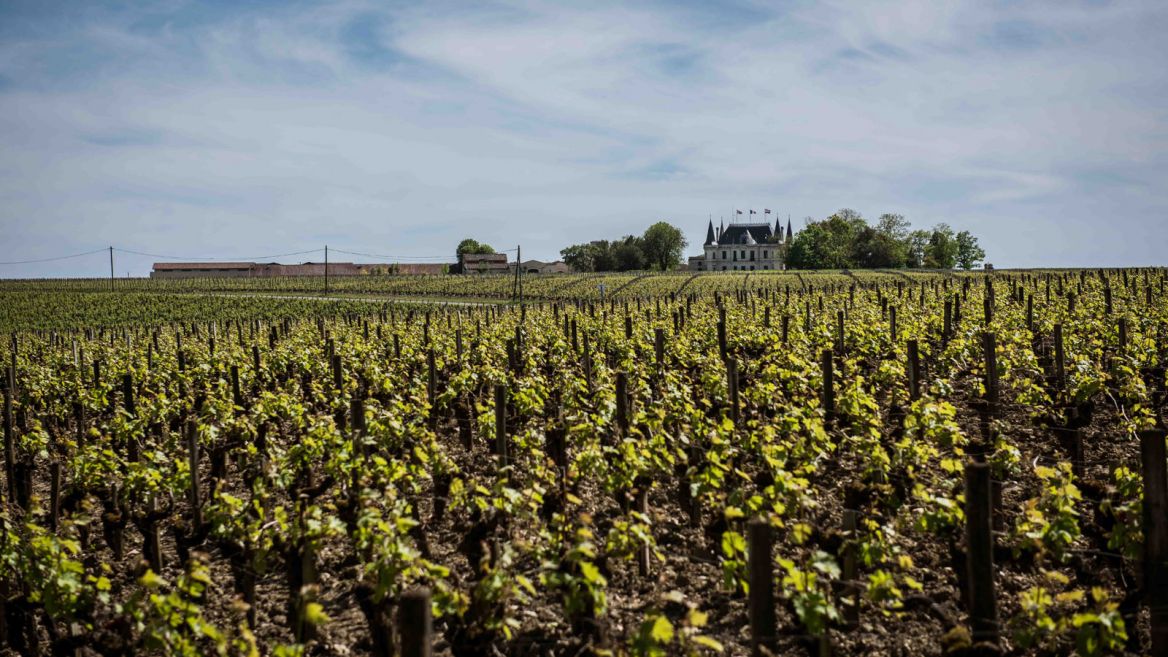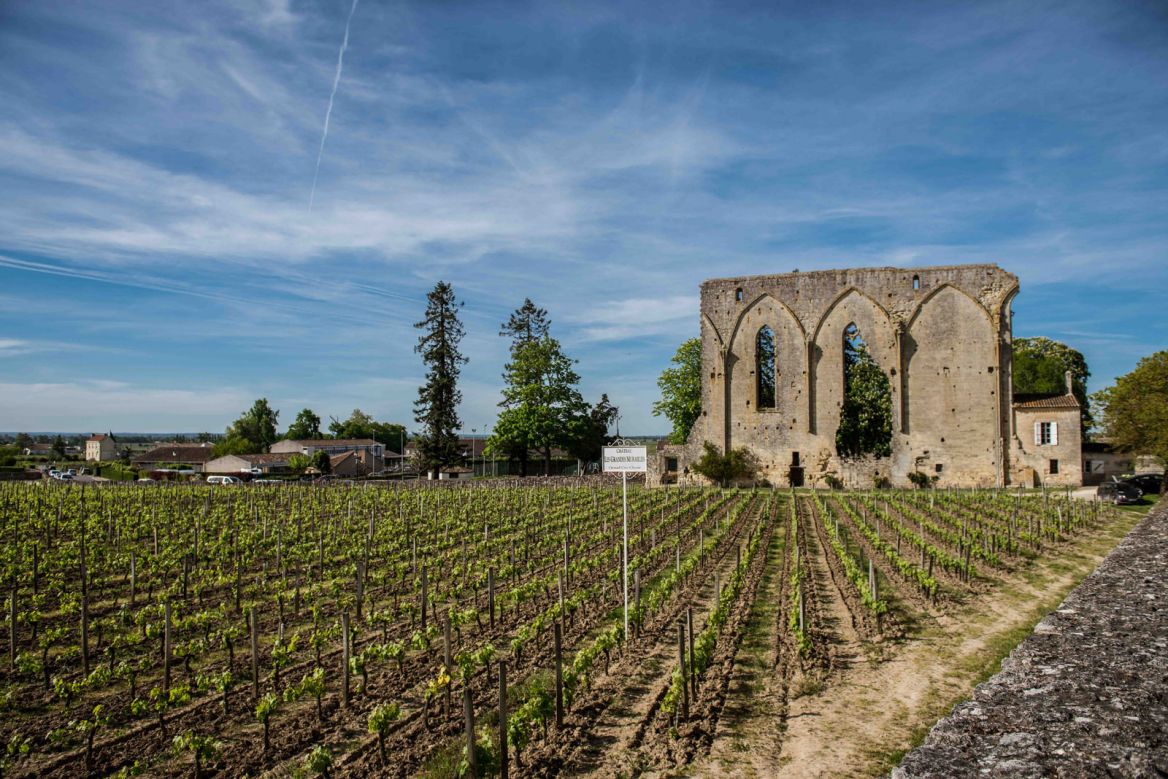- Home page
- Tourism
- Tasting
- The Vineyard
- Tasting
- Tourism
The Vineyard
BORDEAUX, wine worLd reference
Bordeaux and Gironde, the largest AOC (Protected Designation of Origin) vineyard in the world and the most famous, with its 117,300 hectares of vines, its prestigious castles and its 57 appellations; Gironde, protected from the marine winds by its large pine forests, with its oceanic and temperate climate is also a story of vineyards
Its lands, situated either on the left and right banks of the Garonne River, vary between clay, limestone, sand and are favourable for growing vines.
9,000 vineyards produce excellent “crus” (growths): Médoc, Haut-Médoc, Graves, Blayais, Libournais, Saint-Emilion, Entre-deux-Mers, liquoreux…a variety of wines that can be consumed according to your desires.
 The origin of the vineyard, created during the 1st century, comes from the Biturica, the ancestor of the Cabernets.
The origin of the vineyard, created during the 1st century, comes from the Biturica, the ancestor of the Cabernets.
Bordeaux and Gironde have been trading wine with the British isles and the northern countries since the 12th century.
The vineyard survived the powdery mildew (fungus disease) and the Phylloxera (pest of grape vines) during the Middle Ages and again at the end of the 19th century.
The vines of Bordeaux are a combination of a number of grape varieties: 50% Merlot, 30% Cabernet Sauvignon, Cabernet-Franc, Merlot, Petit-Verdot, Malbec, for the red; and for the white, 60% Semillon, 20% Sauvignon, 10% Muscadelle but also Colombard, Merlot blanc, Ugni blanc.
sponsored content
From one riverbank to the other, from one wine to the other
The vineyard of Médoc stretches on the left riverbank of the Gironde River. Ared wine vineyard, which is part of the Bordeaux Wine Official Classification of 1855. It includes two regional AOC: Médoc and Haut-Medoc and six local AOC: Saint-Estèphe, Pauillac, Saint Julien, Listrac-Medoc, Moulis en Médoc, Margaux. It is the domain of the fine wines, of “crus classés” and “crus bourgeois” (classified growth)
Les Graves are located south of Bordeaux, along the left bank of the Garonne River. The vineyard includes two regional appellations Graves (red or white) and Graves-supérieurs (mellow) as well as two local ones: Pessac-Léognan and Cérons. The vineyard of Sauternais, Cérons and Barsac is an enclave to the south of graves. The Sauternes is a sweet white wine, world famous and with honey aromas.
The most renowned is the Château Yquem, “premier cru supérieur established by the Bordeaux Wine Official Classification of 1855 for the Exposition Universelle de Paris under the request of Napoléon III, it included the wines of Médoc, Graves and Barsac-Sauternes. In the Graves, only one castle: the Château Haut-Brion was classified Grand Cru Classé (Top ranked growth), under the wine classification Premier Grand Cru Classé.
sponsored content
 The vineyard of the Entre-deux-Mers stretches between the Dordogne and the Garonne. The Entre-Deux-Mers is renowned for its dry white sauvignon based wine.
The vineyard of the Entre-deux-Mers stretches between the Dordogne and the Garonne. The Entre-Deux-Mers is renowned for its dry white sauvignon based wine.
The region also produces a range of high quality mellow and sweet wines (Sauternes, Barsac, Cérons, Graves Supérieures).
The red wines have also an important place. The vineyard is composed by a regional AOC Entre-deux-Mers (white), as well as many local ones: Premières-Côtes-de-Bordeaux and Côtes-de-Bordeaux-Saint-Macaire (white); Cadillac, Loupiac and Sainte-Croix-du-Mont (sweet) Cadillac-Côtes-de-Bordeaux (red, a denomination in the heart of AOC côtes-de-bordeaux) and Bordeaux-haut-Benauge (red, a denomination au sein de l'AOC bordeaux); Graves-de-Vayres and Sainte-Foy-Bordeaux (red, white and mellow).
The Libourne region includes: around the town of Libourne and on the southern part of the right riverbank of the Dordogne River and its affluent Isle, the vineyards (red wines) of Fronsadais with its appellations Fronsac and Canon-Fronsac; Pomerol with its appellations Pomerol and Lalande-de-Pomerol; then the area around Saint-Émilion with the appellations Saint-Emilion, Saint-Emilion grand cru, Montagne-Saint-Emilion, Saint-Georges-Saint-Emilion, Lussac-Saint-Emilion et Puisseguin-Saint-Emilion.
Then to the east another two denominations in the heart of the AOC Côtes-de-Bordeaux, Castillon-Côtes-de-Bordeaux (former Côtes-de-Castillon) and Francs-Côtes-de-Bordeaux (former Côtes-de-Francs), white wines.
There is no wine classification for Pomerol, but Château Petrus is recognized as a top ranked wine.
sponsored content
The vineyard of Blayais and Bourgeais stretch over 6,000 hectares (including 90% given over to red grape varieties) on the northern part of the right bank of the Gironde River up to the boundary of the Charente-Maritime department and facing the Médoc. It includes a regional Blaye, with two other AOC and a denomination depending on the wines produced: Côtes-de-Blaye (former premières-côtes-de-blaye), Côtes-de-Bourg and Blaye-Côtes-de-Bordeaux (in the heart of the AOC Côtes-de-bordeaux).
In the Bordelais region, the viticultural properties carry the name of the Château. There are more than 3,000 castles accounted.
The wine produced has the name of the wine-growing holding. Some wines are classified and the classification is written on the wine label. To visit the castles, check with the local Tourist Offices.
The oeno-tourism has well developed, the wine producers are ,ambassadors of this exceptional wine growing land, and are delighted to welcome visitors on to their family properties to tour the vineyard and taste their wines.
Open doors day are also organised. Every two years, on even years, the city Bordeaux organises on the banks of Garonne River, the fête du vins (The Wine Fair). In the heart of the town, on a 2 km stretch, a street of wines stalls allow the tasting of some of the 80 Appellations of Aquitaine and Bordeaux.
A tour by the Cité du Vin, which has just opened in Bordeaux, presents a full panorama of wine culture through its immersive and sensorial staging. An invitation to discover Bordeaux wines.
Photos ©Fotolia - ©Philippe Giralt





